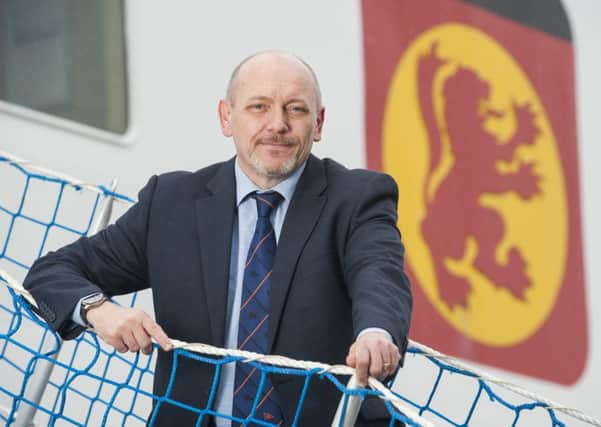CalMac hits new heights as boss remains at helm
This article contains affiliate links. We may earn a small commission on items purchased through this article, but that does not affect our editorial judgement.


The ferries operation said 5,055,827 passengers and 1,356,396 cars travelled on its vessels in 2016, the first full year after the roll-out of road equivalent tariff (RET) across the network. This amounted to 428,801 more passengers and 186,695 more cars than in 2015.
The figures were released after Martin Dorchester, managing director of CalMac and chief executive of the David MacBrayne Group, announced that he is to stay in the roles.
Advertisement
Hide AdAdvertisement
Hide AdDorchester had said in October that, with CalMac having been awarded the Clyde & Hebrides Ferry Services (CHFS) contract, he would step down in March.
Regarding his change of heart, he said that having secured the CHFS contract for the next eight years, “as well as the 35-year concession to run Marchwood Military Port in Hampshire as a joint venture, I felt I had achieved what I came to do and it was time to move on to new challenges”.
He also said that with transport minister Humza Yousaf recently revealing that the Government is to carry out a review of Scottish ferry services, potentially removing the need to put ferry services out to tender, and having discussed the possible implications of the review, he has opted to stay.
“I am excited by the opportunities presented by this review and very much look forward to continuing to work with my team and with all of our stakeholders to secure the best possible results for our employees, passengers and communities, as well as the taxpayer,” Dorchester said.
David McGibbon, chairman of David MacBrayne, said: “The board is delighted that Martin will stay to lead the group throughout what will be an important period.”
The RET scheme on the Clyde and Hebrides ferry network brought journeys in line with the cost of travelling the same distance by road and has led to sharp drops in many fares. Its phased introduction began in 2008, with full network coverage by October 2015.
CalMac said 2016 was the first year since 1997 that it had carried more than five million passengers.
Advertisement
Hide AdAdvertisement
Hide AdDorchester said: “This is a great reflection of the professionalism of our staff in dealing with an increase of more than 400,000 passengers and almost 190,000 cars whilst still running a smooth operation to help all our travellers, whether islanders or visitors, business or pleasure, to get where they are going.”
The busiest route overall continues to be Ardrossan in North Ayrshire to Brodick on the Isle of Arran, which carried 828,262 people and 202,843 cars in 2016, annual rises of 8.7 per cent and 6.8 per cent respectively.
The Largs to Isle of Cumbrae route was second-busiest, carrying 738,549 passengers, up 7.5 per cent, followed by the Wemyss Bay/Gourock to Rothesay on the Isle of Bute route with 675,714 people, up almost 7 per cent.
In terms of cars, the Rothesay route was second with 172,897 – up 19.1 per cent – while Oban to Craignure on the Isle of Mull showed a 40.7 per cent rise to 162,288.
Yousaf said: “These figures underline the success of the full roll-out of RET on the Clyde and Hebrides ferry network, a key commitment from the Scottish Government.
“Cheaper fares bring benefits to locals, visitors and local businesses, making ferry travel more attractive and accessible, as well as providing a boost to the tourist trade.”
CalMac said evidence on a number of routes suggests the reduction in fares has led to islanders journeying more and taking a car with them when prices had previously been seen as an inhibitor.
The highest increase on a 2015-2016 like-for-like route was a 74.1 per cent rise in cars on the Tobermory to Kilchoan crossing, where a larger vessel will operate this summer to cater for the growth in numbers.